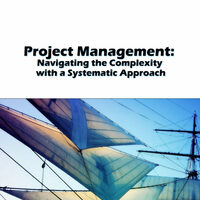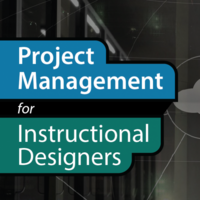Search
Books+
Searching 1,730 books
Search related to the career Project Supervisor
Responsibilities of a Project Supervisor:
1. Planning and Organizing:
- Develop project plans, objectives, and timelines.
- Allocate resources and establish project budgets.
- Create work breakdown structures and assign tasks to team members.
- Monitor project progress and ensure adherence to schedules.
2. Team Management:
- Recruit, train, and supervise project team members.
- Delegate tasks and responsibilities to team members.
- Provide guidance and support to team members.
- Foster a positive and collaborative work environment.
3. Communication and Coordination:
- Communicate project goals, objectives, and expectations to team members.
- Coordinate with stakeholders, clients, and other departments.
- Conduct regular meetings to discuss project updates and address any issues.
- Ensure effective communication channels are established and maintained.
4. Risk Management:
- Identify potential risks and develop mitigation strategies.
- Monitor and evaluate project risks throughout the project lifecycle.
- Implement contingency plans to minimize project disruptions.
- Regularly review and update risk management plans.
5. Quality Assurance:
- Establish quality standards and ensure adherence to them.
- Conduct regular quality checks and inspections.
- Implement corrective actions to address any quality issues.
- Monitor and evaluate project deliverables for quality assurance.
6. Budget and Cost Control:
- Develop project budgets and cost estimates.
- Monitor project expenses and ensure adherence to budget constraints.
- Identify cost-saving opportunities and implement cost control measures.
- Prepare financial reports and forecasts for project stakeholders.
7. Documentation and Reporting:
- Maintain project documentation, including project plans, reports, and records.
- Prepare progress reports and present them to project stakeholders.
- Document lessons learned and best practices for future reference.
- Ensure compliance with relevant regulations and standards.
8. Stakeholder Management:
- Identify project stakeholders and their expectations.
- Establish effective communication and relationships with stakeholders.
- Address stakeholder concerns and manage their expectations.
- Seek feedback from stakeholders and incorporate it into project planning.
9. Problem Solving and Decision Making:
- Identify project issues and obstacles.
- Analyze problems and develop appropriate solutions.
- Make informed decisions based on project objectives and constraints.
- Implement decisions and monitor their effectiveness.
10. Continuous Improvement:
- Identify areas for improvement in project processes and workflows.
- Implement changes and enhancements to optimize project performance.
- Encourage innovation and creativity within the project team.
- Evaluate project outcomes and identify lessons learned for future projects.
Source: Various AI tools












